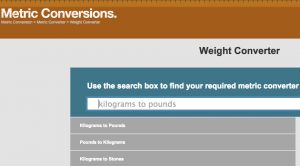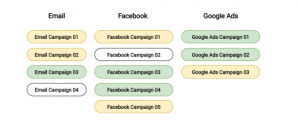Consumers are searching, doing and buying on their mobile devices, yet the challenge to reach them seems greater than ever. Columnist Wesley Young of the Local Search Association takes a look at 9 stats that suggest ways to improve your capture rate.

Getting the attention of today’s consumer is harder than ever before. They are on multiple devices, accessing numerous forms of media. Their paths to purchase are as varied as flavors of ice cream. And many use ad-blocking technology to run from attempts to reach them. It’s like chasing fireflies that light up and disappear in the dark just as you swing your net.
This is a reality that won’t be changing anytime soon. As consumers’ digital experiences are increasingly interrupted by pop-up ads, pre-roll videos and banners that obscure their view, ads and unsolicited content seem to generate more irritation than interest.
While more are trying to improve marketing and ROI through targeting, that still doesn’t always solve the problem of timing (i.e., serving up the content at the right moment). The ultimate goal is not just to serve up an ad or coupon to the right person, but also to time it to the moment when that information is needed or desired.
Google coined the term “micro-moment” to capture that instant when a person is open to discovery — looking for information or searching for products or services.
Micro-moments, according to Google
Google VP of Marketing Lisa Gevelber, who conceived the micro-moments concept, explained that in today’s mobile climate, “intent is more important than identity and demographics, and immediacy is more important than brand loyalty.”
Google has identified four distinct moments every marketer should know:
- I-want-to-know moments
- I-want-to-go moments
- I-want-to-do moments
- I-want-to-buy moments
Each represents a distinct consumer action, and together they cover the full range of user needs across all stages of the consumer journey.
The challenge and potential return of micro-moments
With micro-moments by definition being short, and the amount of data required to predict when they might occur seemingly voluminous, it’s clear that companies struggle with trying to manage the concept.
Forrester reports that only 26 percent of marketers have the data and analytics necessary to identify customers’ moments of need. Only 27 percent have a system in place that can effectively deliver ads or marketing when the moment is identified, and just nine percent can measure them. Combined, that means only two percent of marketers have all the necessary pieces in place to fully take advantage of the micro-moment.
Yet having even some pieces in place can be very profitable. That same Forrester report states that just being able to identify micro-moments makes it 65 percent more likely a marketer will report very profitable mobile ROI. Having an infrastructure to deliver on moments of intent makes it 33 percent more likely, and measuring moments with analytics tools makes it 43 percent more likely.
These micro-moments are also great equalizers for local businesses. According to Google, 65 percent of smartphone users look for the most relevant information, regardless of company or provider, which levels the playing field for local businesses that compete with more recognizable brands.
Capturing those micro-moments may seem to local businesses like trying to create the perfect storm. But being aware of some consumer behavior and utilizing new technologies can help you get there. Following are nine data points and corresponding tips that may help you adjust your local search and marketing strategy to take advantage of the consumer shift to micro-moments and boost your ROI.
1. 33% of mobile users switch to a competitor who provides helpful information
Draft content that helps consumers make decisions.
The internet has changed the way we think. As the volume of information increases exponentially, and access becomes easier, we no longer retain information in our memory as before.
According to research covered by Harvard Magazine, instead of remembering the content itself, we’ve adjusted to remembering where to find it. In other words, we search for it online, using search terms and platforms where we believe the answer lies. But those who have trouble remembering distinct facts may struggle to use those facts in critical thinking (like decision-making).
Today, consumers rely more on content found to provide relevant information that will help them make decisions, which means they go into the process with less bias. That is reflected in statistics from Google that 51 percent of smartphone users have discovered a new company or product when conducting a search on their smartphone — and that one in three users purchased from a company or brand other than the one they intended to after discovering information in the moment they needed it. Further, 69 percent of users are more likely to buy from companies that help them easily find answers to their questions.
So, create content that is helpful or educational and that answers questions consumers may have about your product or service. Address attributes that consumers shop for — such as functionality, durability and expertise — and use anecdotes and images to illustrate the quality of your product or service. Reference or incorporate reviews into your content that others have voted as being helpful to their decision-making process.
For example, in response to a search for “best sounding acoustic guitar strings,” an article that compares the various types of strings, the materials they are made of and the pros and cons of each will both attract an interested buyer and help him or her make a decision. Having a link to your related product page or prices and an add-to-cart button will assist with converting that lead into a sale.
And use different forms of media designed to be informative. Videos, blogs or articles all are ways to serve informative content, and they can include a call to action to contact, visit or buy from you.
2. 43% of consumers ignore companies that serve irrelevant content
Customize relevant search results with local inventory ads.
The opposite is also true — unhelpful content is bypassed or can even have negative returns. Consumers just don’t like content that isn’t relevant to what they are looking for.
In a survey by Gigya, 67 percent of consumers unsubscribed from email lists when targeted with irrelevant emails, and 43 percent ignored future communications from the company. Thirty-two percent went further and boycotted the company’s sites or apps, and 20 percent stopped buying from the company.

Graphic — LSA Insights
Paid search, with its ability to respond to high-intent keywords, is great for identifying micro-moments and consumer needs. But the opportunity is wasted if intent-responsive content isn’t served in return.
There are some services that can tolerate a single ad that is responsive to most or all searches. For example, a plumber might be able to have a single landing page that touts his or her excellent plumbing experience with reasonable prices, no matter whether the search is for water heater repair, leak detection, fixture installation or other plumbing services.
However, if I search for “chew-proof dog beds,” I shouldn’t get the same landing page as when I search for “orthopedic dog bed for older dogs.” I also don’t want to see listings for or pictures of delicate, lacy, pillow-top dog beds.
Google recognizes the explosion of such micro-moments happening on its search platforms, especially on mobile devices. Mobile shopping on Google increased by 30 percent in the last year; and in 2016, 34 percent of online retail purchases are made on mobile devices. Google’s response to requests from retailers for help with micro-moments? Local inventory ads.
While it’s not a new service, Google has been working on improving local inventory ads. The ads allow brick-and-mortar stores that sell tangible goods to customize results by labeling each product with descriptive attributes. Those might include brand, size, color, material, pattern, pricing and a description of any other relevant attributes or special features.
Google also recently added the ability for users to search an advertiser’s inventory in the local Knowledge Panel and include a store pick-up link. It has also expanded shopping ads to image search.
The level of detail that may be added to the “product feed specification” provides rich information that will make results relevant and satisfy in-the-moment consumers.
Facebook has launched its own version of local inventory ads, Dynamic Ads for Retail. With consumers spending more time on apps (such as Facebook’s) than ever before, this is a serious challenge to Google and an opportunity for local businesses.
3. Companies report over 2X CTR using custom audiences on Facebook
Utilize the rich data of social media networks.
Another way to meet consumers in the moment is to push unrequested marketing to them that is customized to their needs in the moment. The problem has always been having sufficient data to adequately identify the when and what of that push.
But today, social media use captures rich data at an unprecedented depth that can help determine intent and vastly improve the relevance and timing of the push. Even smaller advertisers can leverage the immense resources and computing power of powerhouses like Facebook to identify and target those micro-moments.
Not only does Facebook know its users’ demographics, it knows their interests, their behavior, what they like, what they don’t like, what affiliations they have, where they’ve been, what they’ve bought, what they do, what their tastes are, what’s important to them, life events that are happening, their stance on political issues, their income level and many other factors that can be profiled.
Facebook also is expanding their Custom Audiences tool to use non-Facebook information to target consumers, as if it didn’t have enough on its own. New targeting options include frequency of a particular behavior, time spent on content, date ranges of engagement, money spent and devices used.
Reports regarding the success of customized targeting with Facebook data seem highly positive. Constant Contact reported a click-through-rate (CTR) of 2.5 percent for the targeted ads compared to 1.12 percent for all Facebook ads. And Kenshoo reported a CTR of 1.7 percent for dynamic ads on Facebook compared to 1.0 percent across all of its clients’ social network ads.
4. 18% decline in time spent per website visit in the past year
Keep your content snackable.
The internet affects another way we think. Our attention spans are shorter, and we ingest content in less depth. The Atlantic cites Maryanne Wolf, a developmental psychologist at Tufts University, explaining, “We are not only what we read, we are how we read.” And she recognizes that the style of reading of online content puts “efficiency” and “immediacy” above all else.
The way we access online content on mobile devices is also affecting reading style. Google reports that 91 percent look up info while in the middle of a task, and 82 percent consult phones while standing in a store deciding what product to buy.
Mobile phones allow us to look up anything at any time, and we’re squeezing more into shorter times and spare moments. For example, 69 percent of leisure travelers who are smartphone users search for travel ideas during spare moments. These shorter moments translate into the 18-percent decline Google reports on time spent per website visit this past year.
It’s important that you keep information concise and highlight the most important information first. Use headings, lists and bullet points to break up lengthier content, and incorporate graphics when you can to convey information visually and quickly.
Also, segregate or categorize content that can be accessed more directly, and label sitemap sidebars and navigational links clearly so that users can easily find information they need.
5. 70% of consumers who abandon websites do so because it takes too long to load
Make sure your content is served quickly.
Those micro-moments are short, and they need to be sweet. That snackable content needs to be served quickly. Consumers today are in a rush, with 40 percent saying they are always or usually in a hurry when looking for instructions on mobile and over 33 percent saying they are in a rush when searching for a local business. As a result, most of those who abandon websites (70 percent) do so because it takes too long to load, according to Google.
Thirty-three percent of all mobile shoppers head to a competitor if they have a negative mobile shopping experience, which might be page speed or poor mobile design. Thus, it’s critical to make sure your mobile site is fast and provides a seamless experience.
How long is too long for a mobile website to load? Several years ago, it was reported that 40 percent abandon a mobile site if it takes more than three seconds to load. I’d expect that consumer patience is even shorter today. Yet in 2013, the top 100 retail mobile site load time was 4.33 seconds, and it’s actually getting slower. The number increased to 5.5 seconds in 2015 due to heavier content such as video, heavy fonts and other weighty formats.
Check out those numbers and some tips to improve performance using new formats and by removing speed-killing weight here.
6. Offline conversions get up to a 79% lift by using programmatic advertising
Categorize your data so you can use programmatic ads to capture micro-moments and focus on end of funnel strategies.
I reported on a study by Accordant Media on LSA’s (Local Search Association) blog that showed programmatic advertising overall provided a boost to offline sales. Overall, the campaign resulted in an incremental increase of 35 percent more offline sales, representing a 55-percent lift in conversion rate. In the transaction phase, however, those numbers were 44-percent incremental increase and 79-percent lift.
Programmatic advertising seems built for our micro-moments society in which ads can be served instantaneously in response to specific conditions or user activity. This is reflected by the increase in volume of “trading” in the programmatic marketplace by over 150 percent in just the last year.
In order to take advantage of programmatic advertising (and many other targeting strategies that help find consumers in those micro-moments), local businesses need to analyze and categorize their customers by those filters used in these platforms. Some broad targeting categories within which there will be a number of specific data filters include site visitation data such as keywords, interest or lifestyle data, behavior, geography and demographics.
When properly targeted, the data shows users will visit offline stores and buy at offline locations as a result of these online moments. Red Roof Inn executed this perfectly; it was able to track real-time flight delays that triggered targeted search ads to stranded passengers looking for accommodations. That campaign resulted in a 60-percent increase in bookings across non-branded search campaigns.
7. 58% of mobile users are more likely to buy if they can do so quickly
Make sure calls to action are seamless.
Amazon recognized early that friction in the checkout and payment process was contributing to the approximately 70-percent cart abandonment rate. It was granted a patent for its 1-Click transaction concept using stored customer credentials to immediately complete a purchase. That concept facilitates an estimated billions of dollars’ worth of annual revenue. Apple felt it was important enough to license and pay for Amazon’s patented idea, allowing its users to instantly download a song on iTunes and make purchases from its App Store.
The patent expires in 2017, so that technology will be readily available to local businesses through third-party providers that design their own single-click platforms. Yet it is important even before then for local businesses to find other ways to make the checkout process seamless — Google found that 58 percent of mobile users are more likely to buy if they can do so quickly.
Further, the idea can be applied to many other calls to action. Making action easy and instant will boost engagement, traffic and sales. So find ways to reduce friction for actions such as click to call, click to text, directions, bookings, reservations and appointments and other actions that a consumer might take.
8. 35% of Amazon’s revenue comes from product recommendations
Invest in high-ROI retargeting.
Another Amazon boon is product recommendations. McKinsey reports that Amazon attributes 35 percent of its revenue to recommendations, while Netflix reports that 75 percent of what subscribers watch comes from product recommendations. Other retargeting or predictive marketing includes follow-up from the aforementioned abandoned carts and dynamic ads that retarget users triggered by expressed interest from search, clicks and other intent-based action.
ROI numbers like those of Amazon and Netflix have some analysts forecasting widespread adoption of predictive marketing — and technology is making such predictive marketing more accessible to small businesses. Google’s local inventory ads and Facebook’s newly launched competing product, dynamic ads for retail, both accommodate predictive marketing.
9. 50% of local visits are made within 24 hours after local search
Keep your retargeting timeline short.
While retargeting is effective, I’m sure we’ve all experienced being retargeted long after we’ve already made a decision or a purchase.
Micro-moments compress the times between exploration, search, discovery and conversion. Today, Google reports 60 percent of users make purchase decisions more quickly now than they did a few years ago, and 50 percent of local visits are made within 24 hours of a local search.
Don’t waste your precious marketing dollars. Keep your retargeting efficient and your ROI positive by limiting the lifespan of a retargeted ad. Of course, the time will vary depending on the product or service. A search for “coffee shop near me” may have a window of 10 minutes; research for a big-ticket item like a car may have a window of several weeks.
Final thoughts
Micro-moments are here to stay. Those who figure out how to reach consumers at the moment in time when they are looking or doing, or going or buying and can provide helpful, relevant information within a fluid user experience will no doubt be successful.
Sound too difficult? Try a few of these tips, and you’ll be ahead of most of your competition.
[Article on Search Engine Land.]
Some opinions expressed in this article may be those of a guest author and not necessarily Marketing Land. Staff authors are listed here.
Marketing Land – Internet Marketing News, Strategies & Tips
(107)
Report Post










